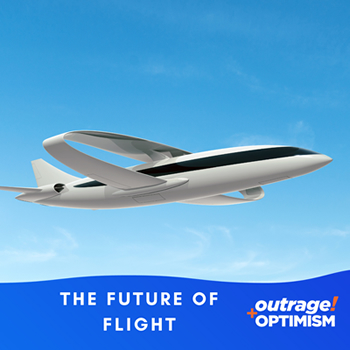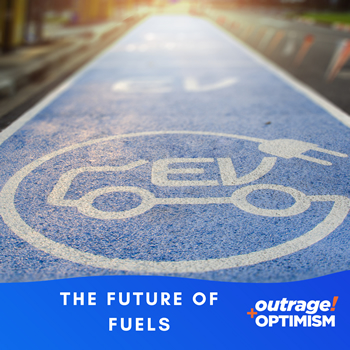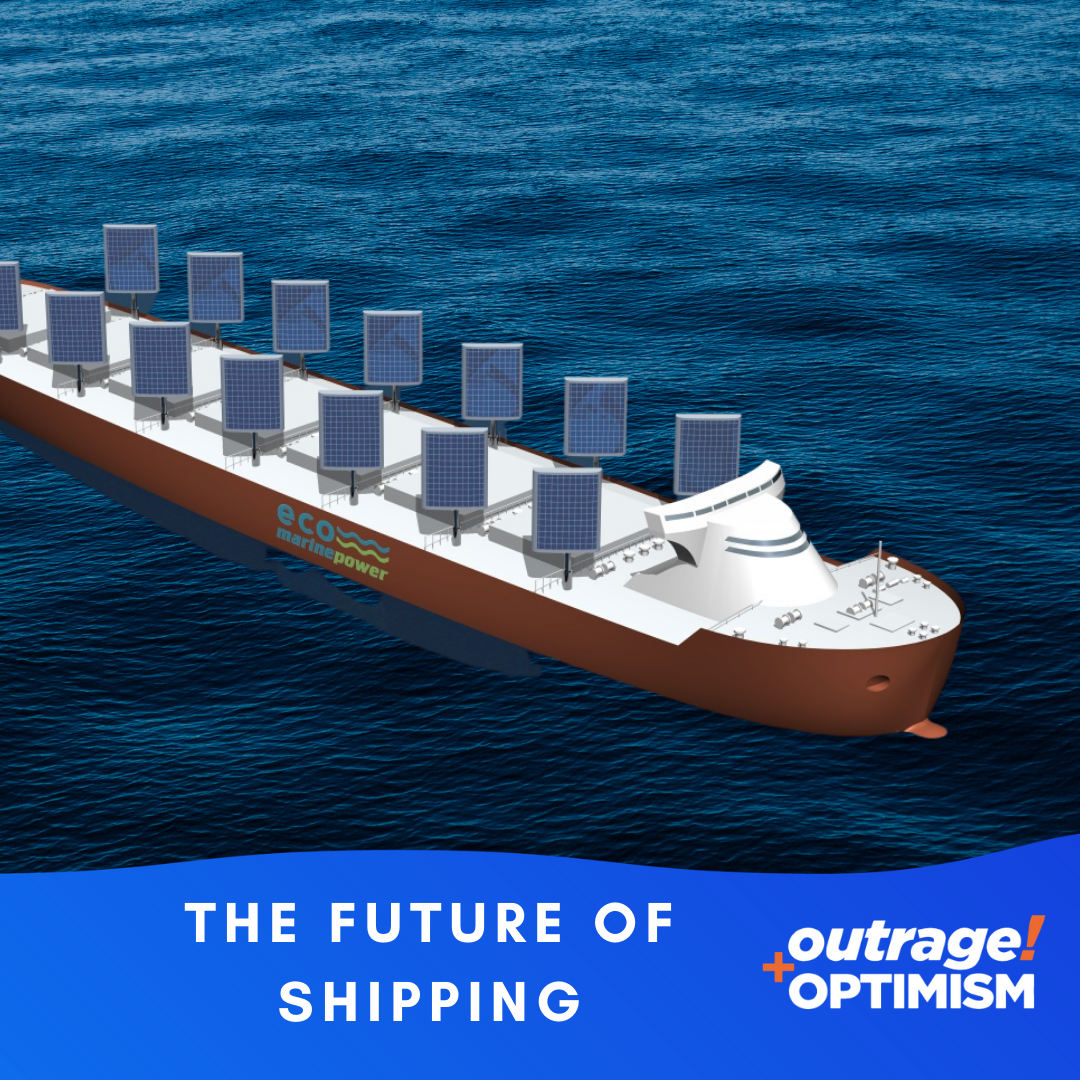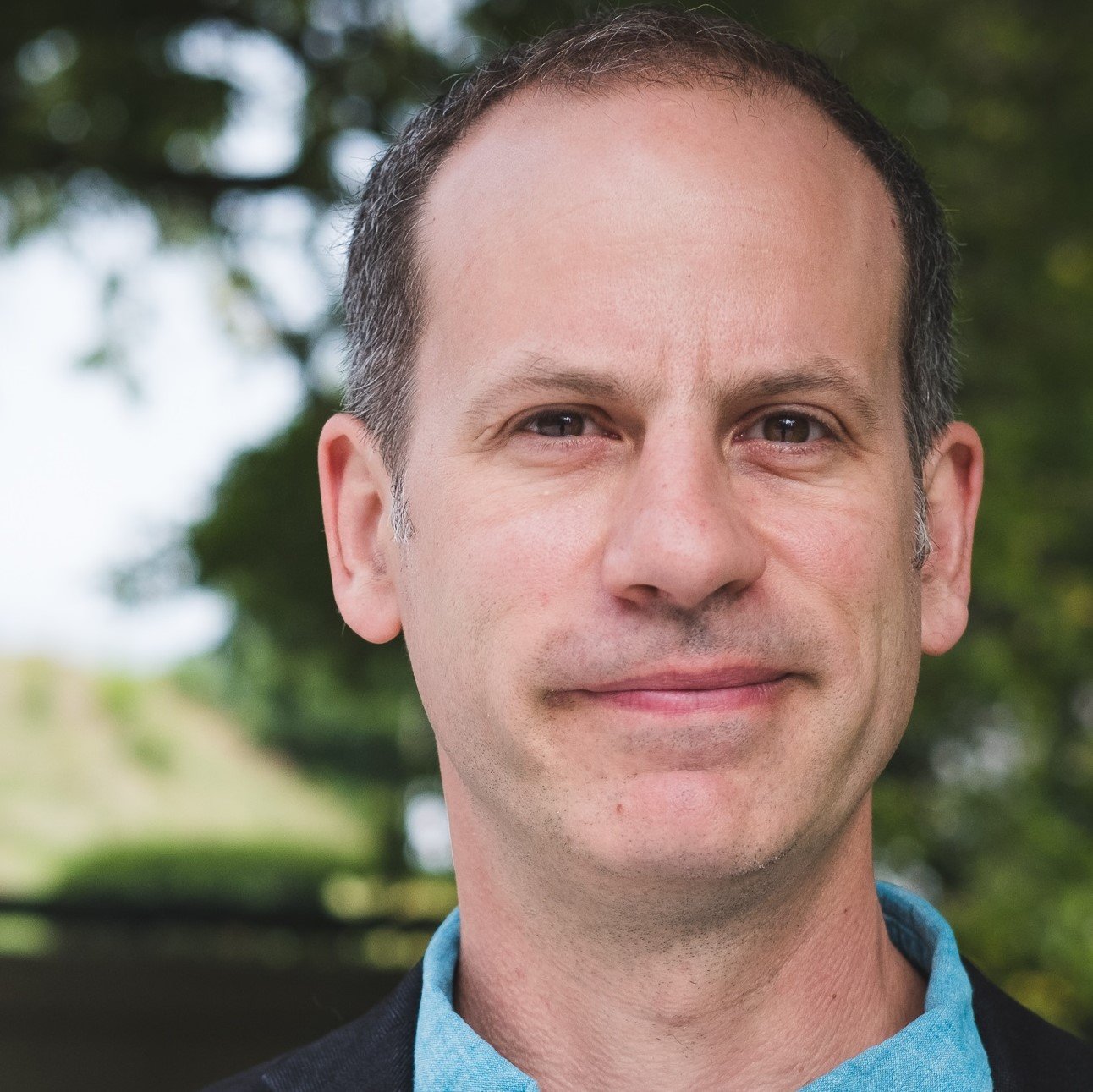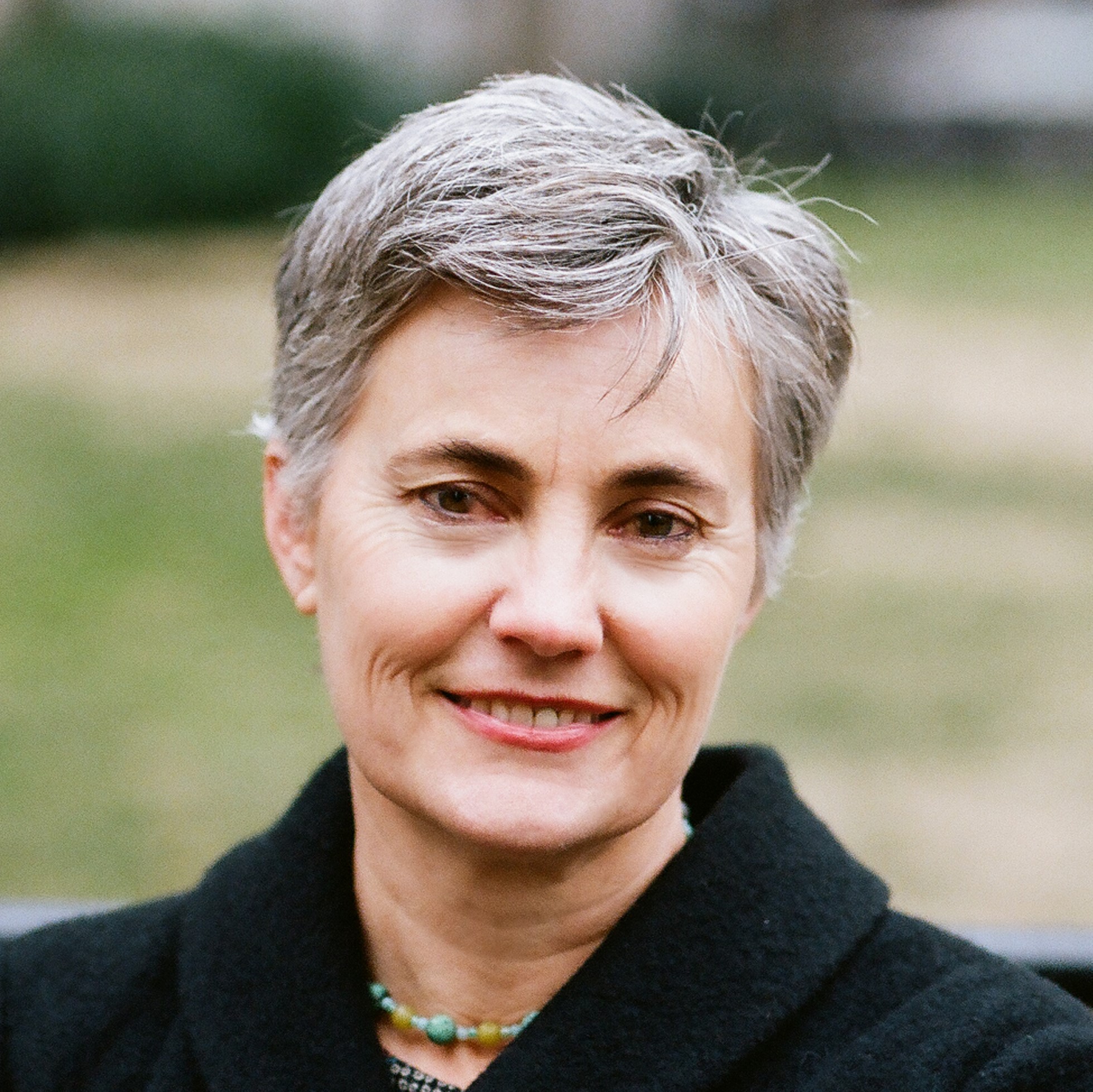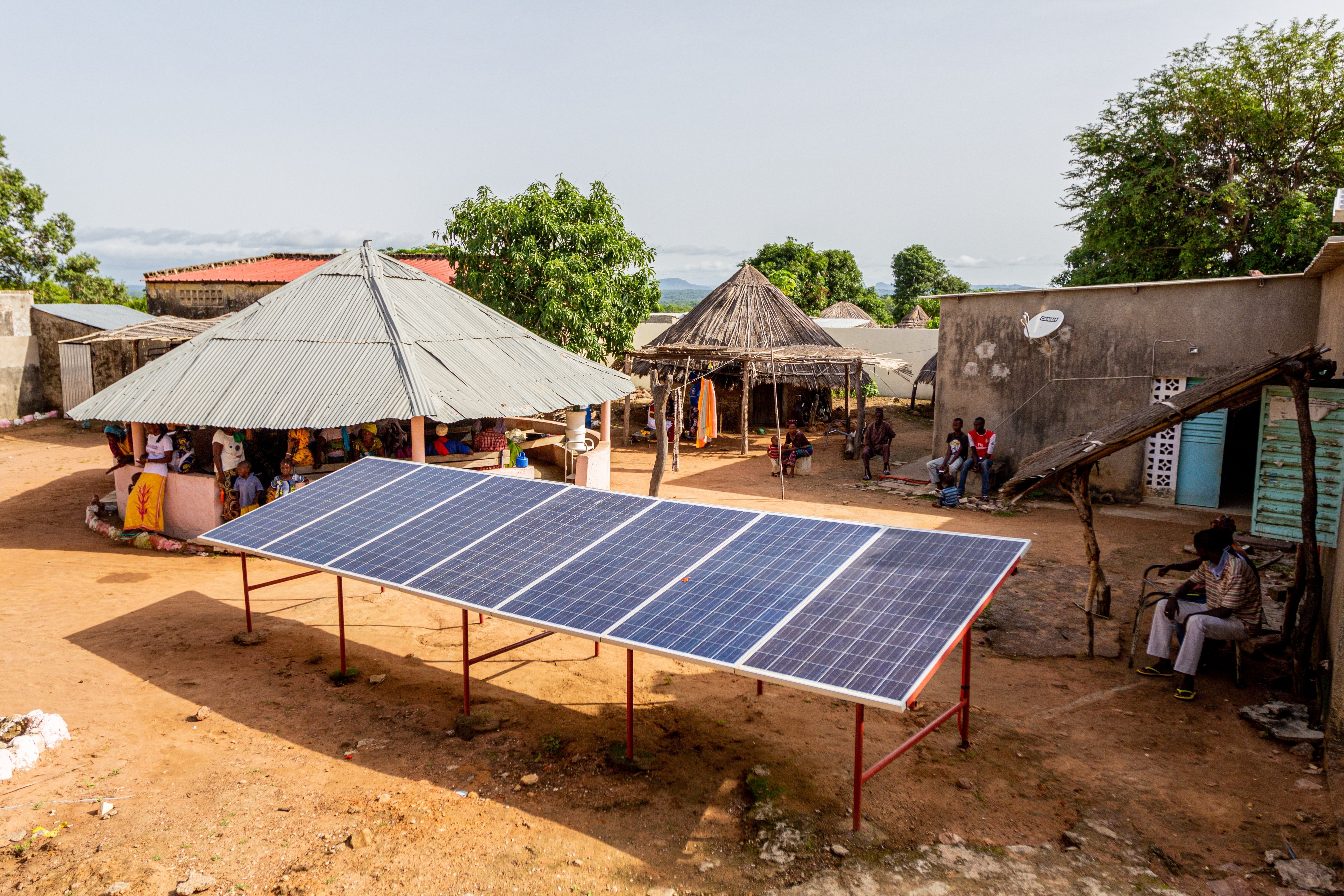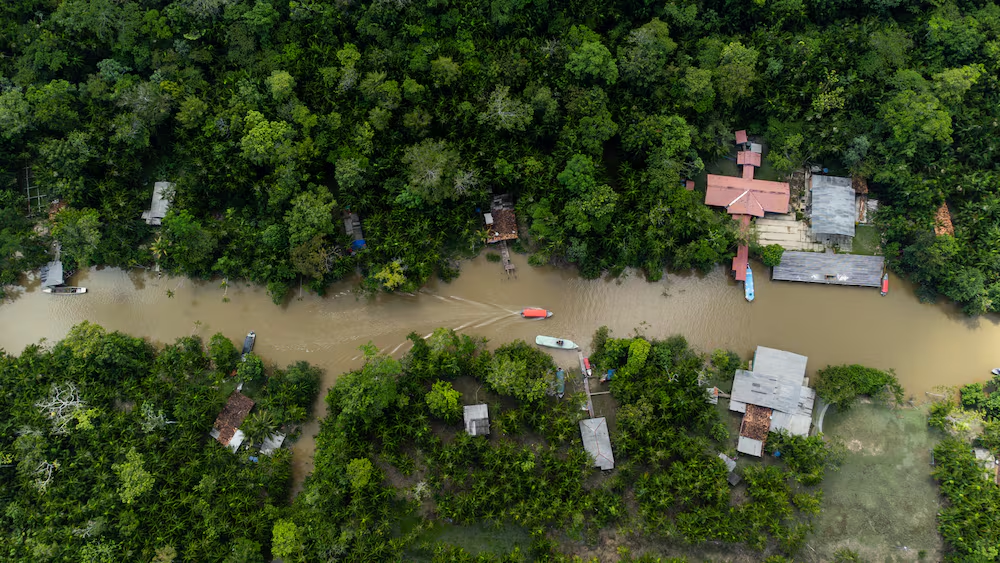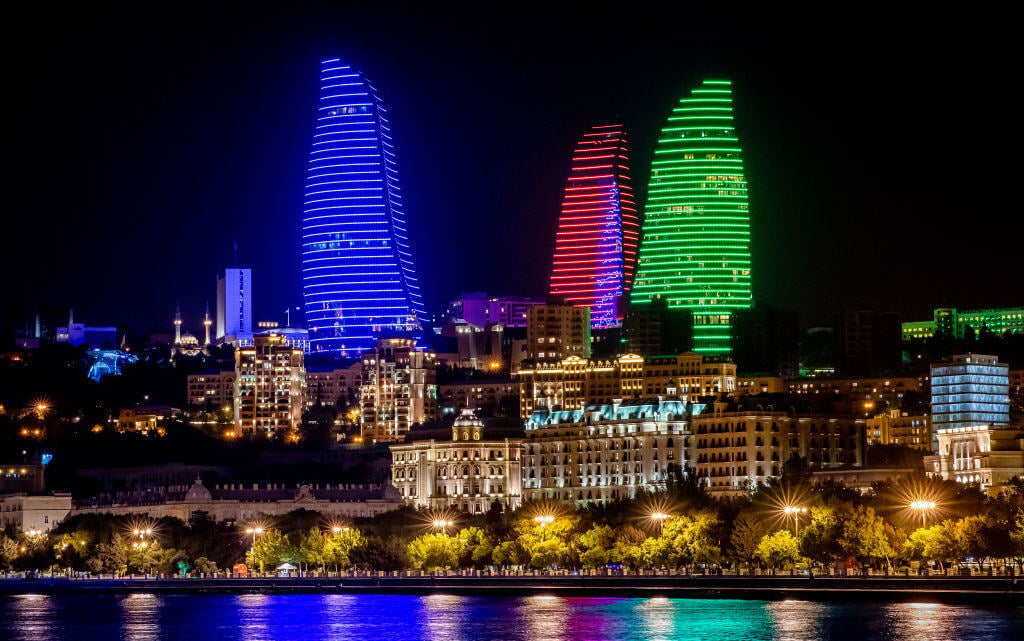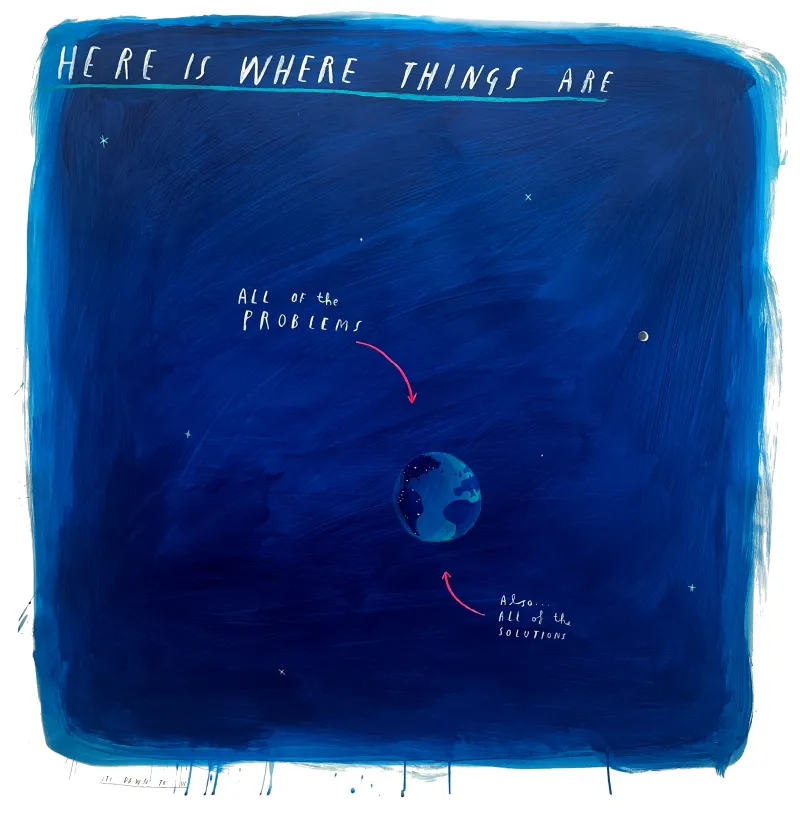87: The Future of Urban Transport
This is our fourth and final episode of an Outrage + Optimism investigative series on The Future of Transport.
About this episode
This is our fourth and final episode of an Outrage + Optimism investigative series on The Future of Transport.
In 2019, UN Secretary General stated that “cities are where the climate battle will largely be won or lost” and he couldn’t be more right. With seven out of ten people expected to live in urban areas by 2050, and cities currently consuming ⅔ of the world’s energy, the need to transition off of fossil fuel based urban transport has never been more urgent.
But how do we solve deadly air pollution, traffic congestion, overcrowding while securing racial justice and a just transition for marginalized communities? The answer might surprise you. From flying taxis and high speed pods, to better bus routes and bike lanes, the urban transport solutions of the future look as unique and varied as the cities they might one day serve.
The future of sustainable cities will mean that billions of citizens can safely get around and enjoy healthy, equitable lives in our urban spaces. From Sao Paulo to London, Montreal to Kampala, Our hosts Christiana Figueres, Tom Rivett-Carnac, and Paul Dickinson speak to transport planners, pioneers and professors, all rising to the challenge of creating more sustainable cities.
This series is sponsored by NESTE
Watch
Full Transcript
Transcript generated by AI. While we aim for accuracy, errors may still occur. Please refer to the episode’s audio for the definitive version
Tom Rivett-Carnac: [00:00:12] Hello and welcome to Outrage + Optimism. I'm Tom Rivett-Carnac.
Christiana Figueres: [00:00:17] I'm Christiana Figueres.
Paul Dickinson: [00:00:17] And I'm Paul Dickinson.
Tom Rivett-Carnac: [00:00:18] This week in the final episode of our special series on the future of transport, we'll be speeding through some of our busiest cities to explore how to keep people and products on the move without costing the Earth. With 7 out of 10 people expected to live in urban areas by 2050, the need to move away from fossil fuel transport systems is urgent.
Shirley Rodrigues: [00:00:50] We know that our toxic air is killing people. It's the first time air pollution has been cited on a death certificate.
Jay Walder: [00:00:58] The large cities that we have today with six ring roads certainly cannot be the way that we imagine the cities of the future.
Kevin Manaugh: [00:01:07] One point four million people are killed every year in traffic accidents.
Claire Birungi: [00:01:12] The situation of traffic congestion, we can almost call it chronic.
Tom Rivett-Carnac: [00:01:16] From flying taxis and high speed pods to better bus routes and bike lanes, the urban transport systems of the future look as unique and varied as the cities they might one day serve. The challenge they all share is to ensure billions of citizens can safely get around and enjoy healthy, equitable lives in our urban spaces. We travel from Sao Paulo to London, Montreal to Kampala to speak to transport planners, pioneers and professors, all rising to the challenge of creating more sustainable cities. That's on this episode of Outrage + Optimism. Thanks for being here.
Antonio Guterres: [00:02:57] Cities are where the climate battle will largely be won or lost. With more than half the world's population, cities are on the front lines of sustainable, inclusive development. With air pollution, a grave and growing issue, people look to you to champion better urban air quality. With environmental degradation, driving migration to urban areas. People rely on you to make your cities heavens for diversity, social cohesion and job creation. You are the world's first responders to the climate emergency.
Tom Rivett-Carnac: [00:03:33] That was United Nations Secretary-General Antonio Guterres speaking at the C40 World Mayors Summit in 2019. As he said, cities are at the heart of the global race to reach net zero by 2050 and how we move around them in the decades to come will be crucial in bending the emissions curve. Kevin Manaugh, an associate professor in the Department of Geography at The Bieler School of Environment at McGill University, says lessons can be learned from the past.
Kevin Manaugh: [00:04:04] I think one of the most interesting things in the sort of resurgence of this idea of walkable cities and liveable cities is is actually going back, you know, not just sort of decades or so, but even millennia to think about how for thousands of years, human settlements were based on how far a person could walk in 20 or 30 minutes. And so, villages and towns and cities, literally over millennia, kind of developed to be very compact and places where people could live and where they slept and worked and interacted with other people, engaged in government, engaged in civic activities, were all very close together. And I sometimes often think of the 20th century, I would hope it’s looked back as this kind of anomaly where we kind of where we thought we could just locate our daily activities so far from one another and go back to a world where we actually don't need all this energy and space and ownership of many ton vehicles per household to get around every day. And so I often think about sort of this almost like not sort of going towards the future, but almost the sort of back to the future type of idea of saying, it's really about how we organize space, how we allocate space, how we mix land uses to make sure people can still live and work and and play and socialize and engage in their activities as citizens without having to travel very far distances for many decades, especially in the 20th century, a lot of the sort of planning, the sort of engineering side of transport has been focused on sort of efficiency and sort of fast movement of people.
Load MoreKevin Manaugh: [00:05:52] And a lot of the work that I'm involved in, the folks that interact with are kind of realizing, well, maybe there's other aspects or priorities that the transport systems could have that are based on not just efficiency and fast movement, but all these other things that we do when we're, transport systems can be designed to to foster better health in people by walking and cycling, foster better social interactions. These ideas of equity, who is welcome in various spaces, on various modes, making sure everyone can access what they need, in a normal amount of time. But kind of moving away from this idea of let's make sure everything's fast, let's make sure we make sure everything's efficient, let's make sure things are equitable and accessible to all people.
Tom Rivett-Carnac: [00:06:42] Slowing down the pace of life in our cities and creating more safe spaces for pedestrians is in theory, a positive step forward. But without careful planning, the so-called greening of cities could just add to the problems of inequality.
Kevin Manaugh: [00:06:58] I often use the high line as this kind of cautionary tale here that on the surface, it looks like such a successful project that it took unused rail lines to something that was often seen kind of visually just kind of scar on the part of Manhattan and and turn it into this thing that's, arguably the most safe or convenient or, place to walk, maybe anywhere but, has had profound impacts on property value, on unaffordability, on issues of inclusion, exclusion in terms of who not only might feel welcome in that space, but more importantly, who can live, within two or three blocks of that. I think one of the one of the biggest issues is this kind of premium that we're paying for, sort of so-called sort of, green and sustainable cities. And I think one of the worst outcomes, worst possible outcomes is that these kind of health, these places that can benefit health and wellbeing and inclusion and environmental sustainability, if these places are unaffordable to people? I mean, we're very obviously not moving forward in terms of anything that I would want to call sustainability.
Tom Rivett-Carnac: [00:08:19] But some cities are managing a successful transition to sustainable mobility solutions.
Kevin Manaugh: [00:08:26] Some of the best examples, I think, of what's currently happening in Paris, for example, places like Oslo and places where people, the political leadership at a sort of local level and a sort of mayoral level are realizing the importance of banning cars or opening streets to people, maybe more positive way to think about it, and things, expanding pedestrian networks, expanding bike networks. In the city that I'm in, Montreal, the current mayor, Valerie Plant, has also faced a lot of criticism for that same kind of that same kind of leadership of trying to say let's refocus our transport on active modes, on walking and cycling, and let's rethink how we make decisions about transport. One of her promises in her election campaign was the so-called pink line of the of the metro system, and which was one of the first subway systems I'm aware of that was very explicitly presented, as you know, and defended to sort of focus on equitable access, we need this the subway, not because it'll make people go faster because in socially disadvantaged parts of the city, people need more access to their daily activities. But it was really sort of put forth as a social justice or social equity or mobility justice issue, which I think which was very impressive, I think. And I've also been impressed by how she's withstood political opponents and trying to sort of reframe how we how we think about and define transport systems.
Shirley Rodrigues: [00:10:10] We know that our toxic air is killing people. We just seen the outcome of the inquest of the little girl, Ella Adoo-Kissi-Debrah. It's the first time air pollution has been cited on a death certificate.
Tom Rivett-Carnac: [00:10:26] That's Shirley Rodrigues, London's Deputy Mayor for Environment and Energy, talking about Ella Adoo-Kissi-Debrah, who suffered from a rare and severe form of asthma. She lived in an area of London where levels of nitrogen dioxide air pollution from traffic regularly exceeded the legal limit. Ella was just nine years old when she died in 2013. I asked Shirley how tragic cases like this can drive change in a city which has such a legacy of fossil fuel transport.
Shirley Rodrigues: [00:11:04] There is an imperative there to look at that health impact and to look at how as a leader, a city leader, you're taking along your citizens in all the stakeholders in London to tackle the issue. And, of course, we have to look at making sure that our city still functions economically, that people can still access transport and do what they want to do in social terms and so on. But it's absolutely key that that we tackle those health impacts which have huge social costs, economic costs, cost to our NHS since Sadiq Khan, the mayor of London, was elected in 2016. We've seen the number of schools in areas of pollution, NO2 pollution, really drop by about 97 per cent. So it shows through the sort of combination of policies that the mayor has brought in around, for example, expanding public transport, making it more accessible, more affordable by promoting more walking and cycling, and then by discouraging and incentivizing people to use their cars less, particularly the polluting cars. So the signature policy he's brought in was the ultra low emission zone in central London in the sort of area of the congestion charging zone. And that has seen a very rapid and dramatic cut in air pollution of around 44 percent in NOX, NO2, rather, at about six percent in carbon emissions. So we have lobby organizations, NGOs like Moms for Lungs, Friends of the Earth, Greenpeace and others, many others, alongside our health professionals, our royal colleges and the medical professionals who have come together to really advocate for the need to move to a more sustainable lifestyle because they see that, as a sort of quality of life issue, not just as a health issue or as an environmental issue.
Tom Rivett-Carnac: [00:12:55] Yeah, and a social justice issue as well, right? That it's all about it's about actually being able to breathe air that's not going to kill you. That's how you kind of bring everybody involved and you realize that actually you can create something that's positive for everybody else. That's very exciting. So, London's obviously been what's so fascinating about your job as it's been through so many iterations as a city. Right. And it sort of still in the grips of the fossil fuel world. But you're kind of working to bring it out of that. What does that look like, that future of urban mobility? I mean, give us a snapshot of the future.
Shirley Rodrigues: [00:13:23] The mayor has set a target for 18 percent of trips to be made on public transport or active transport, so walking and cycling. And then the remainder of the trips will be in vehicles. But some private vehicle trips. But obviously, we want those to be limited as far as possible to support the sort of economic fabric of the cities, of delivery vehicles and so on. And we want those to be much cleaner vehicles, preferably electric. And that's why we've done a big push, for example, in and trying to electrify the transport in London, providing the sort of supported mechanisms to do that within the powers that the mayor has. Cities are home to so many people. They are the source of carbon emissions because of the infrastructure there. But obviously the people in terms of consumption and so on. So the ability to act is in the cities and many cities are taking action. You know, when governments weren't, for example, when the U.S. Government wasn't, we saw cities and regions step up, say we're going to carry on, take on this this role, because it's so important to our citizens and to the futures of our cities. Many other cities around the world have been instrumental in helping governments to go further and faster. You know, I think we've just seen in Japan, for example, the work of cities really pushing the government to adopt tougher target. And the same, I think, would be said in London. You know, many of the policies that we've been pushing forward in London, we're really great to see the government is now espousing, for example, like phasing out fossil fuels by 2030, a zero carbon standard for homes and buildings. These are all things that have been in cities that governments eventually catch on without our action, whether it's cities or businesses or NGOs and others. We're not going to be able to really take the action in this decade of action that that we need.
Tom Rivett-Carnac: [00:15:29] And one business that needs cities to step up and support its sustainable mobility ambitions is IKEA. I spoke to Pia Heidenmark Cook, Chief Sustainability Officer.
Pia Heidenmark Cook: [00:15:45] We know that mobility today, yes, it's fantastic because it's the kind of infrastructure of our society it's like energy it creates a lot of opportunities. But we also know that we have the problem of pollution, congestion. Yes, it's given us a lot, but it's also given us an urban environment that is not really people friendly. So for us, mobility is really a critical part of what we do, because it's about how people get to our stores, but it's also how we get the goods home to our customers. What we see and what we work with this on one side, last mile delivery where we have committed to having 100 percent zero emissions or EV by 2025. And that was really a bet on the future. There's a lot of opportunities but there's equal amount of challenges. What we see is that because we are a life at home with small parcels, the delivery trucks that we use are often not made for our kind of deliveries. So we need to really work together with the manufacturers. So we're working with two large manufacturers to really develop delivery trucks that work for us and our deliveries. So I would say availability of the trucks. Another one is, of course, infrastructure, having EV charging infrastructure, which is available in some places but not everywhere, then the technology itself. If I take a concrete example, China is actually our star when it comes to home delivery. So we have just reached 90 percent of all our home delivery in China. We have around 30 stores in China is now with electric vehicles. We use about ten thousand trucks, but we don't own them.
Pia Heidenmark Cook: [00:17:39] So we work with service providers and they often work with the small companies that own their own delivery trucks or cars. And for them we all know that the price is still quite high, the initial investment is high, and that deters some people. Some people are afraid of stepping into the new. So it's, but fantastic opportunities because it's over the lifetime of the vehicle. It is a much smarter solution than what we have today.
Tom Rivett-Carnac: [00:18:12] So having committed to zero emission last mile deliveries by 2025, where in the world is IKEA currently working to achieve this?
Pia Heidenmark Cook: [00:18:21] We are deploying it now. In 20 out of our 30 markets, we have focused on five cities to really go all in. We made an announcement two and a half years ago and we were in L.A., so we announced it in L.A. So we put L.A. as one of the five cities there and it was also Paris, Amsterdam, New York and Shanghai. What we quickly learned was that Shanghai did it within a year. It was really fast. They had the infrastructure. They had clear signals from the mayor or from the city. The technology was there. The awareness of air pollution is huge in Shanghai. So there was this big neat Amsterdam, New York has been a bit more difficult. They are on track to achieve it within the next few months. L.A. super difficult, combination of the asset light model with our suppliers in L.A., the other reason being far in between infrastructure. So the charging was just simply not there because L.A. being such a sprawn out city and then awesome, which is weird in a way with California, but awareness. But I would say, again, it is the willingness and the openness. And the mayor's office in L.A. is now super on board. But having the commitment from the government, from the city, the infrastructure, the setup with the suppliers and the service providers in the specific city, those are the key elements, more and more cities, more and more countries are saying, they will ban diesel in the city center. We simply can't do business because 18 percent of our business today is e commerce. E commerce is connected to home delivery. And if we can't drive into people's homes, we can't do our business. So it's absolutely about the business imperative and it's the right thing to do. Maybe not, maybe short term, higher investment cost, longer term we know it's a better product. So it's I would say it's a win-win for people, for planet and for profit.
Tom Rivett-Carnac: [00:20:45] As more of our city centres commit to banning fossil fuel powered vehicles, the challenge of trying to both lower emissions and meet the transport needs of burgeoning populations will be tough.
Sergio Avelleda: [00:20:57] We are observing, especially in Africa and in Asia, cities are expanding quickly, the same phenomenon we observed in Latin America in the last decades.
Tom Rivett-Carnac: [00:21:09] Sergio Avelleda is the urban mobility director at the World Resources Institute, Ross Center for Sustainable Cities. He's also the former secretary of Mobility and Transport in Sao Paulo, Brazil, where he was responsible for managing the most extensive bus system in the world.
Sergio Avelleda: [00:21:30] By 1950 Sao Paulo had around 2 million people and just right now only the city, we are 11 million people and in the metropolitan area we are 23 million people in 39 different cities. But focusing on mobility, of course, prioritizing to public transport is essential because you know that cities are responsible for a large part of emissions around the world. So we should be focused to reduce emissions to do it. First of all, we need to reduce travel, desire and travel distances. On this point, urban plan is essential. Redesign neighborhoods, connect people. And I'm not talking about a big investment, but for example, some cities during this pandemic, they planted exclusive lanes. It's quick and cheaper to do and it increases the efficiency of public transport. You need only paint and some signals to do it and prioritize the walkability and especially cycle lanes. Bogotá, for example, when we start the quarantine period, they opened the streets for bicycles. They used to do it on Sundays and they became it permanent to incentivize people to travel by bicycle. We have different solutions for different cities, but in general, what we are recommending is prioritize the space for public transport.
Tom Rivett-Carnac: [00:23:05] In fact, Sergio's home city of Curitiba was the first in Brazil and only second in the world to build a bus rapid transit line, a so-called BRT.
Sergio Avelleda: [00:23:17] In the 1970s, they opened the first the BRT lines in the world. And what is interesting, that they create a new urban plan saying you are allowed to densify the use of the land around the BRT lines after 50 years, around 50 years, if you can fly over Curitiba, but by a helicopter you will see this urban plan. You see a lot of buildings are residential buildings around these BRT lines and no buildings after three or four blocks from these BRT lines. It's amazing because the people have a very good option to use public transport so they don't need to have cars. You will allow people to densify around these BRTs
Tom Rivett-Carnac: [00:24:12] And back in Sao Paulo, people were incentivized to use different forms of public transport thanks to one simple solution.
Sergio Avelleda: [00:24:21] They created a smart card. OK, we have different smart cards around the world, but it allowed the city to offer discounts on the integration. So in 2004, people used to pay one fare for each leg on their trip with this card it offered for people to pay only one fare for three legs. It was a big revolution in the use of public transport, people saved money, so they used much more public transport. And the second revolution was when the city government and the state government integrated the same cards between buses and trains and the metro lines. We transported around two point two million people per day before this integration. One year after this integration, without new lines, without new stations, we were transporting around three point five million. So we increased 50 percent of ridership on the Metro because of the fare integration. The second good example, I think it is about the ride hailing services framework in regulation. Sao Paulo planted a very good framework of regulation to try to guide the ride hailing services. Uber and the other companies are in the public interest, so first of all, they are paying for use the streets they pay part of their revenue, of its revenue is paying a public tax and the city government is using these taxes to improve public transport quality. Second, we created a system that these companies can obtain some discounts. For example, if a woman is driving the car, they have a discount on this payment. If the travel is offered far from the downtown, they receive another discount to incentive them to maintain and offer in different areas, not only in the rich areas. Third, if the trip is by electrical car, they receive a third the discount and they can accumulate these discounts.
Sergio Avellada: [00:26:35] So it creates economic rationality to design a better service not only for the users, but for the whole society. So the key solutions, especially for big cities, for medium and big cities, should be focused on public transport. No new technology is designed to transport the fifty thousand people per hour per direction. No shared vehicles, no scooters, no bicycles are able to transport 50, 60, 70 thousand people per hour per direction. Only BRTs or metro lines or train lines are able to do it. So the public policy should be focused to electrify the public transport.
Tom Rivett-Carnac: [00:27:21] But for some cities in the world, just trying to finance a public transport system is still hard to do. Yet with 90 percent of urban population growth expected to take place in developing nations, a lack of climate conscious planning could have profound consequences. Claire Birungi is the country manager in Uganda for the Institute for Transportation and Development Policy.
Claire Birungi: [00:27:48] Kampala is growing. The population of the city itself is approximately two million. But during the day we have another two million coming from the outside coming into the city. Currently, our public transport system is supported by minibus taxis, which is 14 seat capacity, which is low capacity vehicles, mostly old vehicles. And the roads of course, the capacity is not sufficient. So there's a lot of traffic congestion and small capacity vehicles. And currently we don't have a mass public transport system that's operating in the city. So definitely, the situation of traffic congestion, we can almost call it chronic right now. If we can organize the city and not replace but transition and work together with the smaller capacity public transport vehicles that we have right now to a mass public transport, we think a lot of people would be able to move to it. And, of course, it would make commuting and leaving the urban city more easy or more friendly or it would be so much better definitely.
Tom Rivett-Carnac: [00:29:03] A public transport system in Kampala wouldn't just ease congestion. It would also help reduce social stigma.
Claire Birungi: [00:29:12] There is, of course, social differences in that absence of public transport, the mini bus taxis are not attractive to a certain class of people. So everyone almost in the middle class is almost forced to buy a car as you advance in your career or in whatever form of work that you're trying to do. Owning a car is a status symbol. So it's now being branded as if you're using public transport or you're working. You're from a certain class of income. So which public transport would break a bit because this would be a good public transport for all and it would break that social barrier that's currently there right now.
Tom Rivett-Carnac: [00:29:57] So what improvements are being made to put the people of Kampala on a more equitable path?
Claire Birungi: [00:30:03] Our city has been making some significant steps. Initially, our infrastructure did not take care of the 40 percent of the population that actually walks. So we did not have sidewalks and cycle lanes and all kinds of infrastructure for non motorized users. But now the national roads agencies and the city authorities, when they are upgrading or maintaining roads, they are now including facilities for walking and cycling, which benefits all the other class of people or any other person that actually wants to walk. And the city has also made some steps in developing a public transport system, we don't have an operational one right now, but in 2014, with the support of the World Bank, they did a detailed design for a bus, rapid transit. So right now, one of the hindrances, or I can say the delays, is mainly in the funding, having the funding for the infrastructure and also forming the institutional planning that can sit that will be responsible for the public transport.
Tom Rivett-Carnac: [00:31:16] And despite fossil fuels currently dominating Africa's energy mix, Uganda is looking to homegrown companies to help develop a zero emissions public transport system. Kiira Motors is one of the few electric vehicle manufacturers on the continent.
Claire Birungi: [00:31:33] Their plan right now is that they have developed buses that as zero carbon and the infrastructure they have, they have like prototypes or concepts in how they are going to develop areas where they're going to put the charging points, where they're going to do all the infrastructure to support those types of buses. But of course, it's a new concept in most of the African cities. So when you talk about it on a large scale, it's very hard to comprehend for many. But I think Kiira Motors having been in the business, I can say, but they seem to have done enough research and testing to be able to at least start on a lower scale because you need to start somewhere. So I think once given an opportunity, we can definitely bring on buses or public transport services that's going to use electric vehicles.
Tom Rivett-Carnac: [00:32:27] And like many of its European counterparts, Kampala has reaped the benefits of banning cars from its central business district.
Claire Birungi: [00:32:35] I think one of the significant projects that the city has undertaken is called a non motorized transport project. It's in the heart of the CBD where it was originally an area that was congested with cars and it was just almost impossible. And it's also the central business area. So the city took an initiative to redevelop it, to only have access for pedestrians and cyclists. So accessing such an area from the nearby areas, they realized that the businesses are now booming. It's more attractive. People of a different class are now able to actually also go to those types of places. So I think these improvements in transport have a role they play in individual people's lives, in cities and also on other larger scale benefits. Definitely.
Tom Rivett-Carnac: [00:33:31] So while bike lanes and car bans are having positive impacts in some cities, groundbreaking technologies continue to evolve in others.
Veniam: [00:33:39] Imagine a city where autonomous vehicles are roaming the streets, offering on demand mobility and improving everyone's quality of life.
Tom Rivett-Carnac: [00:33:51] This is the once the stuff of science fiction, driverless cars may soon be coming to a city near you. One person who is closely following that journey is Robin Chase. She's the former CEO and co-founder of Zipcar, one of the world's first car sharing companies. She spoke to Christiana about how harnessing the internet could be a game changer for mobility.
Christiana Figueres: [00:34:17] You basically established car sharing as a concept and as a practice. However, move forward from that crazy new idea to now being the executive chairman of Veniam, where you are building the networking fabric for the internet of moving things. What is the internet of moving things?
Robin Chase: [00:34:43] Well, if we think about all the connected cars and autonomous vehicles and how we move around chumping from our cellular program to Wi-Fi, cellular spectrum to Wi-Fi spectrum, what we've realized is that people aren't stagnant and vehicles aren't stagnant. And we kind of, we as lay people imagine that the cell connection works all the time, but we know it doesn't. So what Veniam does is it chooses the piece of spectrum, meaning are you going to be on Wi-Fi? Are you going to be in cellular? Are you going to talk to the car in front of you? That's closer to a Wi-Fi hotspot. How do we maximize the use of different types of spectrum to make the lowest cost and most reliable connection possible? It's a really complicated problem having autonomous vehicles drive around the city. But the thing that those researchers are holding constant is this idea of the connection to the cloud. The reality is the connection to the cloud is not perfect and not constant, but it needs to be so by using different pieces of spectrum in a very clever, reliable and fancy method. You are connected all the time. But that piece of work is totally nontrivial. And so Veniam is filling that gap. And as I say, it's also being used for delivery. Like Amazon and UPS, they want their trucks connected all the time for their various reasons. And this enables them to do that connection again, reliably and cheaply without having to worry about it.
Christiana Figueres: [00:36:20] Autonomous vehicles. There was a time in which we thought that they would be happily driving around most cities of the industrialized countries, perhaps even by 2020. Yet where are we in the development of autonomous vehicles? And is this connectivity that you've just talked about that Veniam is developing, is that one of the barriers to, let's say, normalizing autonomous vehicles are there other barriers? Where are we? What is the status of autonomous vehicles?
Robin Chase: [00:36:55] So you are right that five years ago I was on top of AV's and I was paying so much attention to them and all the car manufacturers were kind of vying with each other. Oh, yeah, we're going to have them by 2019 no by 2020, oh by 2021. And all the car manufacturers had lined up. So we're all screwing around with terror as policymakers thinking, oh, my God, can we get this all in line? And what's happened in those intervening years is, I'd say the last two percent of the vehicle, of autonomous vehicle technology is just way harder to resolve than was thought. When we talk about autonomous vehicles, they are these five levels of automation possible in cars. And I'd say level zero is a kind of car you had in 1950. And level one would be, oh, antilock brakes like that is a type of automation that happens. You don't do anything. It takes over. When we talk about autonomous vehicles in the public's mind, they see what we think of as level five, which means you can use an autonomous vehicle any time, anywhere, any weather in the world. That's level five. We're not close to that. But level four, which is one step down, which is in specific geographies with a geographical fence, a geofence, virtual fence around. You can operate at what's called level four, and we are actually in many places at that level four. That technology exists and there's many companies that are doing that. What is disagreed about is, what is the standard we hold autonomous vehicles to for safety relative to human drivers? And so right now, in many of the pilots -.
Christiana Figueres: [00:38:47] Not a small question, actually a pretty powerful question.
Robin Chase: [00:38:52] It's a powerful question. But what is intriguing to me around that question is we accept today, today cars are killing one point three million people in the world and maiming, I want to say, and never another seven million is not an insignificant number. And we just let that, it's OK.
Christiana Figueres: [00:39:11] You mean car drivers because it's drivers behind the wheel.
Robin Chase: [00:39:15] Yeah, exactly. Exactly. And so that's exactly the point. So today's drivers are, in fact, incredibly unsafe. And we've just accepted that as background noise to conduct our economies. When we come to autonomous vehicles, people many people want to say, oh, my God, it's now software that's driving these things and we can't we have to hold it to a higher standard that it has to be zero accidents.
Christiana Figueres: [00:39:45] If I want to see an AV or experience that, what city would I go to?
Robin Chase: [00:39:50] So, yes, there is the other end of the spectrum and famously is Waymo in Tucson, Arizona, and there indeed they have vehicles that are moving at real speeds and it's on again, off again. I think right now a certain number of people can call a Waymo car and use it just like a taxi and it goes wherever they ask it to go at speeds that are normal car speeds and again in a geo fenced location.
Christiana Figueres: [00:40:21] And, it strikes me, Robin, that all of the examples and the geofences that you have mentioned are actually in cities. Could you speak to the city part of this? Why are cities such a big deal on addressing climate change? Why is transport such a big deal?
Robin Chase: [00:40:40] Anything you do in a city, whatever you spend, whatever you do, you are touching way more people's lives than you would in a rural area. So if we think about going back to vehicles, any vehicle that you're going to be using, whether it's just a regular shared car from today or a taxi or an autonomous vehicle, you have to get a return on that investment. And as we move up the spectrum, cars themselves are expensive, but autonomous vehicles are even more expensive. We need to have that asset used to its maximum possibility as we talk about shared assets versus privately owned assets. It's really an interesting transformation of what it means for the future of autonomous vehicles. So specifically, when I think about you owning your personal car, your decision to drive anyplace is how much does it cost to get there? If it's an electric one is about one penny a kilometer or a penny and a half a mile or so in a city, we're moving 20 miles an hour. So it's like 30 cents an hour to move a vehicle from a marginal cost or on the highway, let's say, 70 cents an hour. So where would you not send an autonomous vehicle if you were paying it? The cost to you was 50 cents an hour.
Robin Chase: [00:41:58] Where would you not go? I would say, oh, I forgot my umbrella at work. It looks like rain. Please run home and get that. We will be inventing a huge number of unknown things to do with that vehicle because it costs nothing to move. So if we come down to cities and the long term impacts of autonomous vehicles, I am delighting in the future of autonomous vehicles in that I think we can make them all electric and it will dramatically save a lot of lives. It will provide access and mobility to people who right now don't have that access and mobility because they don't have a driver's license. But on the flip side, if we don't get that pricing signal right and I think it needs to be shared, we will be overconsuming to this gigantic amount because it just is an irrelevant price point to us. Moving that vehicle is just irrelevant to us. And that will have enormous implications for congestion and our cities, which are already today dominated by car traffic.
Tom Rivett-Carnac: [00:43:00] Now, who hasn't sat in gridlock, traffic, wishing their car could take flight and rise high above the chaos and congestion, while one company seeing a solution in the skies is Volocopter.
Volocopter: [00:43:17] Welcome, everybody. In front of Volocopter's hanger. Volocopter makes the dream of electrical flights in cities come true.
Tom Rivett-Carnac: [00:43:28] Florian Reuter is its CEO.
Florian Reuter: [00:43:31] The original idea for Volocopter came when we saw more and more of those toy drones being all around us and how easy they were to be controlled. Right. Every kid nowadays can control one of those very complex drones. And the principle behind it was really fascinating to us. And we thought, hey, shouldn't it be possible to use those control principles to also build a vehicle that can actually carry humans? It is like a gigantic drone, the same control principles, and it adds to that the principle of distributed electric propulsion, which means we don't have a single engine anymore as historical aircraft have or helicopters in particular had. And we have like a whole system of distributed electric motors that are propelling 18 individual rotors. And that gives us just such a high degree of redundancy that we can cope with individual failures and such, and get to unprecedented levels of safety. And the thought of running on electricity, running on renewable electricity and using batteries came very early. And we were very adamant about staying all electric, not going down the hybrid route, not going down the conventional energy sources route simply because we said anything that we want to apply in the city of the future at scale absolutely needs to be sustainable. There's just no other way around it. And electric power, meaning batteries are the only way that can pave a road map towards that full sustainability. We're certainly not where we want to be just yet, but we have a clear roadmap towards that.
Tom Rivett-Carnac: [00:45:10] Test flights have been carried out in Dubai and Singapore and Volocopter hopes to have its first paying passengers in the next few years.
Florian Reuter: [00:45:18] We have announced Singapore and Paris as the two cities in position for first routes, and we expect them to be able to go live sometime around the end of 2022, early 2023. We selected Singapore and Paris as our starting cities for a variety of reasons. What was interesting in Paris is that they have the upcoming Olympics in 2024 and this really mastered a whole consortium of private and public players in Paris to come together and say, look, we want urban mobility to be in place for the 2024 Olympics. And in order to get there, we need to be fully operational by 2023. And that means we need to, kick it off now, select a partner who we can implement this with and so on and so on. So by this natural timeline towards the Olympics, we were able to really find all of the necessary stakeholders in a city environment to come together and be working with us very actively towards meeting that timeline. And Singapore, on the other hand, is the perfect role model for the future city, like many other cities around the world, are looking towards Singapore for implementing futuristic solutions also in their city environment. And Singapore has a great reputation of being able to safely and efficiently implement new technologies and as such serves as a role model to many cities around the world, particularly in the Southeast Asian and wider Asian region, where we see the greatest potential actually for our Volocopter operations.
Tom Rivett-Carnac: [00:46:58] And the idea is they'll be as easy to hail as a cab or an Uber.
Florian Reuter: [00:47:03] You will have an app on your phone. You know, you have a transportation need. You just put in where you are, where you want to go. And the phone pretty much suggests you the best mobility option. Right. So I also envision this to be integrated into other modes of transportation as well. So seamlessly, intimately integrated. And then hopefully the Volocopter will play a role more often than not. And you will be guided, for example, with the grab scooter towards the next Voloport near you. Or you can walk there depending on where you are and where the next one is located, you will be completely digitally checked in already. You will be greeted at the Voloport and get on your ride and it will automatically take you to your destination. Currently, we have an all electric range of twenty miles, which pretty much covers the basic center of all megacities around the world. We have analyzed it. The top 93 of 100 airports are actually located within that distance from the city center. So from the start, we can serve all relevant routes in the metropolitan areas around the globe.
Tom Rivett-Carnac: [00:48:09] So while autonomous air taxi rides for two might sound pretty niche, Florian says this is only the beginning.
Florian Reuter: [00:48:16] We see the the current plans really to be the humble beginnings of what ultimately will transcend into a full transformation of urban mobility. As we know today, urban mobility worldwide is a 10 trillion dollar market opportunity, so it's huge and even just one percent of it is 100 billion market opportunity, meaning even if urban mobility stays in a niche for the initial years, this is a market large enough to sustain us and our finance model and maybe, one or two other places for many years to come. But I think eventually, yes, our technology will continue to advance. We will all get used to it. We will build the necessary digital and physical infrastructure to support operations at scale. And at that point in time, I don't want to predict where it ends. I think it is absolutely feasible to come to a scenario that will, somewhat look like the Jetsons scenario, where everyone who has a mobility need has the aerial option. And in a world where vehicle talks to vehicle, vehicles speaks to infrastructure, internet of things, full 5G implementation, it's absolutely feasible to be picking you up on demand at your doorstep and take you directly to your destination. So in terms of how far will this technology go and how much will it transform the way we move about our cities? And I think very few people really comprehend the massive amount of change that we're going to see from coming from that technology.
Tom Rivett-Carnac: [00:49:47] And speaking of massive technological change. What you just heard was the first human passenger test of Virgin's Hyperloop, an ultra fast transportation system designed to travel at speeds of more than a thousand kilometers an hour. That's three times faster than high speed rail and would mean a trip from San Francisco to Los Angeles. Currently, six hours in a car would take just 43 minutes. Jay Walder is Virgin Hyperloop CEO.
Jay Walder: [00:50:44] Hyperloop is really the first new form of mass transportation that we've had in over 100 years. We can combine an ultra efficient vehicle, magnetic levitation and a low pressure, low drag environment to be able to allow us to reach airline speeds with one tenth of the energy consumption. It gives us the ability to be able to transport tens of thousands of passengers per hour. I have worked almost my whole career in transportation. And the reality is whether you're the chairman and CEO of the MTA in New York or a managing director in transport for London, you are always bound by decisions that are made before you, but by the history of what's there in the case of London, by one hundred and fifty years of history, of what's there. And almost by definition, the changes that you make are incremental. They allow us to take small steps off a model that we've had before. What Hyperloop is doing right now is giving us the ability to think beyond that, to think about what a giant leap might be and what would fundamentally happen in the way that we live our lives, the way we connect places, the way we think about everything we're doing. And yes, that's hard and that's complicated to be able to do. But what it unlocks is the ability to be able to think fundamentally differently about the way that we're able to offer a mass transportation service. We also needed to reflect the values that we have today, most prominently the environment. We wanted to be something in which we're saying it's the first choice for people to be able to travel because it's the best way to get there in shared mobility. And at the same time, the outcome for the environment is much better.
Tom Rivett-Carnac: [00:52:40] So what would the infrastructure for such a high tech transport concept look like?
Jay Walder: [00:52:45] So if we think about the way the trains operate or the way that that planes operate in all of those cases, we're dealing with what nature may be putting in front of us, whether it's a snowstorm, whether it leaves on track, where there's turbulence in the air. Hyperloop has its own contained environment in which it's working. And what we put through that tube are pods. They're relatively small vehicles. We anticipate that they will hold 25 to 30 people in a single pod. It's going to float on magnetic levitation. So it will be super smooth. I like to tell people that you can literally hold a cup of coffee while you're traveling at a thousand kilometers an hour. So all of these pieces come together. And then the final part, which is not a physical piece of infrastructure, is the control system. Effectively, we've created a low drag environment. We've created an electric vehicle. We've created the ability to be able to have smooth operations. And now the last part of this is autonomous. It allows us to be able to operate this completely autonomously with the computers and the sensors actually operating the system. And so it really combines so much of what we actually see today in the way that we're able to do it.
Tom Rivett-Carnac: [00:54:14] Ok, given the thousands of miles of tracks and tubes that would need to be built, where in the world is currently best suited to the Virgin Hyperloop concept?
Jay Walder: [00:54:26] With our partner, Dubai Ports World, DPW, is that we're looking at the way in which we can deal with both cargo and people in the Emirates and potentially a connected Gulf thinking about how we actually reshape this. And that's an area that you would really look at and say is largely greenfield. The transportation networks have not yet been developed there. In India, we've been working on a project from Mumbai to Pune. This project, these are two of the most congested cities in the entire world, wonderful cities. They're separated by about one hundred and thirty kilometers. Today this is almost a four hour trip. And people tell me it's four hours if you're lucky. We will turn this trip into less than 30 minutes, and so we've been designated as the official project proponent for this Mumbai-Pune project to be able to bring this forward. And then finally, one of the other areas that I'm incredibly excited about is the United States. I mean, we have seen a real movement toward Hyperloop just in the last couple of years. And we have a president elect now who comes into office with a clear mandate to say that he wants to see us improve high capacity, energy efficient mobility across the country. And I think Hyperloop fits directly with that.
Tom Rivett-Carnac: [00:55:56] As some cities slowly start to recover from the devastating blow dealt by Covid-19, how does Jay see that having an impact on how we plan for the future?
Jay Walder: [00:56:09] Well, I think one of the things and know it's hard to talk about a silver lining in a global pandemic, but I think one of the things that the pandemic is doing is it's unlocking us from a lot of the predispositions that we had. I think it gives us the opportunity perhaps to break away from inertia. And in doing it, and as we come out of this, to be imagining things that are different and better than what we had before. All of the projections pre-pandemic were that two thirds of the world's population would be living in cities by the year 2050. I don't think the pandemic changes that over the long term. I think it has clearly had some impact in the short term, but I don't think it changes it over the long term. We know that cities are sort of the petri dish of innovation, of productivity that's there. And there's lots of good reasons why we want to be able to deal with that. But we also know that density comes with drawbacks. And we've seen that the large cities that we have today with six ringroads certainly cannot be the way that we imagine the cities of the future in doing it. If you can connect cities like Metro stops, if hours literally become minutes, then we come to a fundamentally new form of regionalization, one that allows the movement of people and goods in ways that we didn't imagine before. That allows us to take advantage of the benefit of what cities have literally within minutes. I love the thought that we can be in a city, take a bike, share bike to a portal. That's our phrase for a station, hop on a Hyperloop and being in another place within minutes. I think that unlocks so much for us. I think it unlocks the connection, the ability to have a knowledge economy and a labor market that's accessible to everybody. And in doing it, it allows us to have access to the things that we enjoy that we've missed so much right now. But we can do it in a different way and perhaps creating much, much more flexibility than we've ever imagined before.
Tom Rivett-Carnac: [00:58:20] So as our journey comes to an end and we reflect on how all these different transport solutions could play a crucial role in improving the lives of billions of people in cities around the world, we return to Kevin Manaugh for a final thought on how to best shape our decision making in the coming decades.
Kevin Manaugh: [00:58:41] Let's think about what we actually want to sustain as a society. And I think that those ideas don't get lost in a certain environmental question. But think about that these ideas of inclusion, these ideas of who has access to health care, access to green space, access to other to social opportunities, access to education are important. And so if a transport system is built on that basis, I think it definitely helps move in the right direction.
Tom Rivett-Carnac: [00:59:24] So what a great opportunity we have had not just this week, which we should also talk about where we talked about the future of urban mobility, but over these four series that we have produced. It's been a very different journey for us, Outrage + Optimism through this partnership with Neste to have these in-depth investigations into the future of transportation. I think it's been a really different form of podcasting. Have you guys enjoyed it?
Christiana Figueres: [00:59:47] It has been rather a very different experience because, A: it allows us to go deeper into these topics and it allows for many different opinions and sort of approaches to the topic to be brought in into an integrated whole. So, yeah, it's been very different, very different. I have to admit, guys, that it took me a while to warm up to that style of podcasting, but I really appreciate it now.
Paul Dickinson: [01:00:19] I've got all these little memories of amazing things. Mr. Piccard talking about how no airplane company was interested in electric airplanes, and then he flew a solo plane around the world with a fantastic team. And now every airplane company is looking at electric airplanes or the manager of Formula E saying that the Formula E cars had to race through London at like 3:00 in the morning and they would only get permission to race if nobody complained. Totally silent Formula One car, fantastically exciting. So like all these different slices of technology in shipping and airplanes, urban mobility, transport, it's like you suddenly realize that underneath the sort of superstructure of climate change, it's just millions and millions of little revolutions happening. It's great.
Tom Rivett-Carnac: [01:01:13] Yeah, I've learned so much I've said and I sort of think of myself as someone who's broadly educated around what's going on, on climate change, but having the opportunity to dive into this, to have these series of different conversations, as you say, all these innovators, these creative people who are really at the cutting edge of what they're trying to do, really transforming their sector. I've sort of, I'd never really thought in a structured and detailed way, as I did during these podcasts about that. And I've really enjoyed it. I think it's been great. It's been very different. The feedback from listeners has been fantastic. Everyone seems to have really enjoyed it. So I guess it's all about, doing this podcast, how do you keep it fresh? How do you keep changing things up, trying different approaches? And to me, this has been a really good one. I have to say a big thank you to Catherine Harte, who's been our series producer. And I have to say, I think we've been better prepared for these podcasts than we've been for any other podcast we've ever done. Although it's a low bar, though, isn't it?
Paul Dickinson: [01:02:01] Yeah, there is a problem because Catherine's like a professional from the broadcast industry and actually brings expertise and essentially how to do this properly. And it's revealed spectacular levels of incompetence amongst much of what we've been doing since I started. So that's a problematic character. But otherwise, Catherine, I mean, it's hardly an insult. It's a huge compliment. Thank you.
Tom Rivett-Carnac: [01:02:20] You've revealed our own incompetence to us. Have you enjoyed being scripted, Paul? Because I know that is one of your dreams.
Christiana Figueres: [01:02:25] Wait, I would love to hear some words from Catherine. What it's been like for her.
Paul Dickinson: [01:02:30] She's the kind of puppet master behind. I don't know if she'll come off the Zoom. Will she speak?
Tom Rivett-Carnac: [01:02:36] She's not on video yet.
Paul Dickinson: [01:02:37] Will she associate herself directly with the Outrage + Optimism brand? We're about to find out.
Catherine Harte: [01:02:42] Yes. It's been an absolute pleasure being invited into the family and obviously I realise it is a break from how things are done normally. And I appreciate all the hard work that I've made everyone do. Over and above the norm.
Christiana Figueres: [01:03:02] Yes, yes, yes, yes.
Catherine Harte: [01:03:04] I apologize for the 20 page documents that used to thump into your inboxes, but no, it's been an absolute pleasure. And even I've learnt a great deal myself and as well. And it's just been fascinating to speak to so many different people. And also the enthusiasm that's out there, I think and wanting to speak on the podcast, it was never an issue trying to get people to come on and say that's testament to, I think, what you've been doing up until now. So just good luck and thank you.
Paul Dickinson: [01:03:37] Now, there's a lesson there that you start off with, like real incompetence, and then eventually professionals just appear. It's magic.
Tom Rivett-Carnac: [01:03:44] Well, this is the end of the series, although I am very sure that this has been, to my mind, so fun and such a success that I very much hope we will continue working with Catherine and keep exploring this mode of podcasting as we go forward. Of course, regular listeners to the podcast will know that we are embarking on a series in partnership with COP26 and the Race to Zero. That is going to be somewhat similar in style to these podcasts in the sense that there'll be more ongoing conversations, deep dives into particular issues so the style isn't going away. We'd like to say a big thank you to Neste for this series. You probably could tell by the fact that Catherine is here and the reference to the big documents. These are a lot more work, these podcasts, and we couldn't have done it without financial support from Neste for which we are very grateful and obviously wish them all the best as well in their work to transform the world of transportation. So with that, we will be back to our regular programming next week. This has been a great episode today on the Future of Urban Mobility, and has been a great mini series on the future of transportation. Thank you for coming with us on this journey. We look forward to what's next in this most decisive of years, in this most decisive of decades. We'll see you next week.
Christiana Figueres: [01:04:53] Bye.
Clay Carnill: So there you go. Another episode of Outrage + Optimism. I'm Clay, producer of the podcast. Thank you for listening and I hope you enjoyed the show. If this is your first episode in this miniseries that you're hearing, I've put a link in the show notes that will take you right to where you can listen to the previous three episodes that we've done. They're investigative episodes just like this one, where we talk about the future of flight, fuels and shipping. So go check it out. And if you're just finishing the series with us now, please leave us a rating and review on Apple podcasts. We read every single one and it really helps other people find the show. So thank you. OK, time for the credits. Outrage + optimism is a Global Optimism production. Our executive producer is Marina Mansilla Hermann, and this episode was produced by Clay Carnill and Catherine Harte. Catherine, I'm going to miss getting 20 page documents in my email from you. OK, maybe not so much, but I will miss joining all of the Zoom interviews with you. Amazing work on the series. I'm looking forward to the next one. Catherine Harte, everyone. OK, so we get this question all the time. Who is Global Optimism? We are Sarah Law, Katie Bradford, Lara Richardson, Sophie McDonald, Freya Newman, Sarah Thomas, Sue Reed, Sharon Johnson and John Ward. And our hosts are Tom Rivett-Carnac, Christiana Figueres and THE Paul Dickinson. Thank you to our guests this week for making the episode possible. Kevin Manaugh, Pia Heidenmark Cook, Robin Chase, Claire Birungi, Sergio Avellana, Jay Walder, Florian Reuter and Shirley Rodrigues. And speaking of finishing the series, a celebration is in order. Thank you to Neste for sponsoring.
Clay Carnill: I should have done this way further away from my computer. There's champagne. You got to wipe it down. This might be the most expensive way to wreck your computer. Thank you to Neste for sponsoring this mini series. It feels like just yesterday when we had our first Zoom meeting together, actually I think it was on Google, we had our first Google Meet meeting together and this mini series was just a dream, but not the reality. So congratulations on a great series. So I hate to break it to you, but this episode is about to end. But the fun does not stop here. Follow us on social media @GlobalOptimism, where we keep you updated on the state of stubborn optimism in climate. And while you're at it, send us a message. We love hearing from you. OK, I poured champagne. That is a wrap on episode for The Future of Urban Transport and The Future of Transport series sponsored by Neste. Join us next week with artist, author, illustrator and friend of Tom's, Oliver Jeffers. The two of them have this secret club that we're all trying to get into. So, you know, will we get an invite? Find out next week, hit subscribe and we'll see then.
Your hosts

Christiana Figueres
 Follow Christiana Figueres on Instagram
Follow Christiana Figueres on Instagram

Tom Rivett-Carnac
 Follow Tom Rivett-Carnac on Instagram
Follow Tom Rivett-Carnac on Instagram

Paul Dickinson
Guests
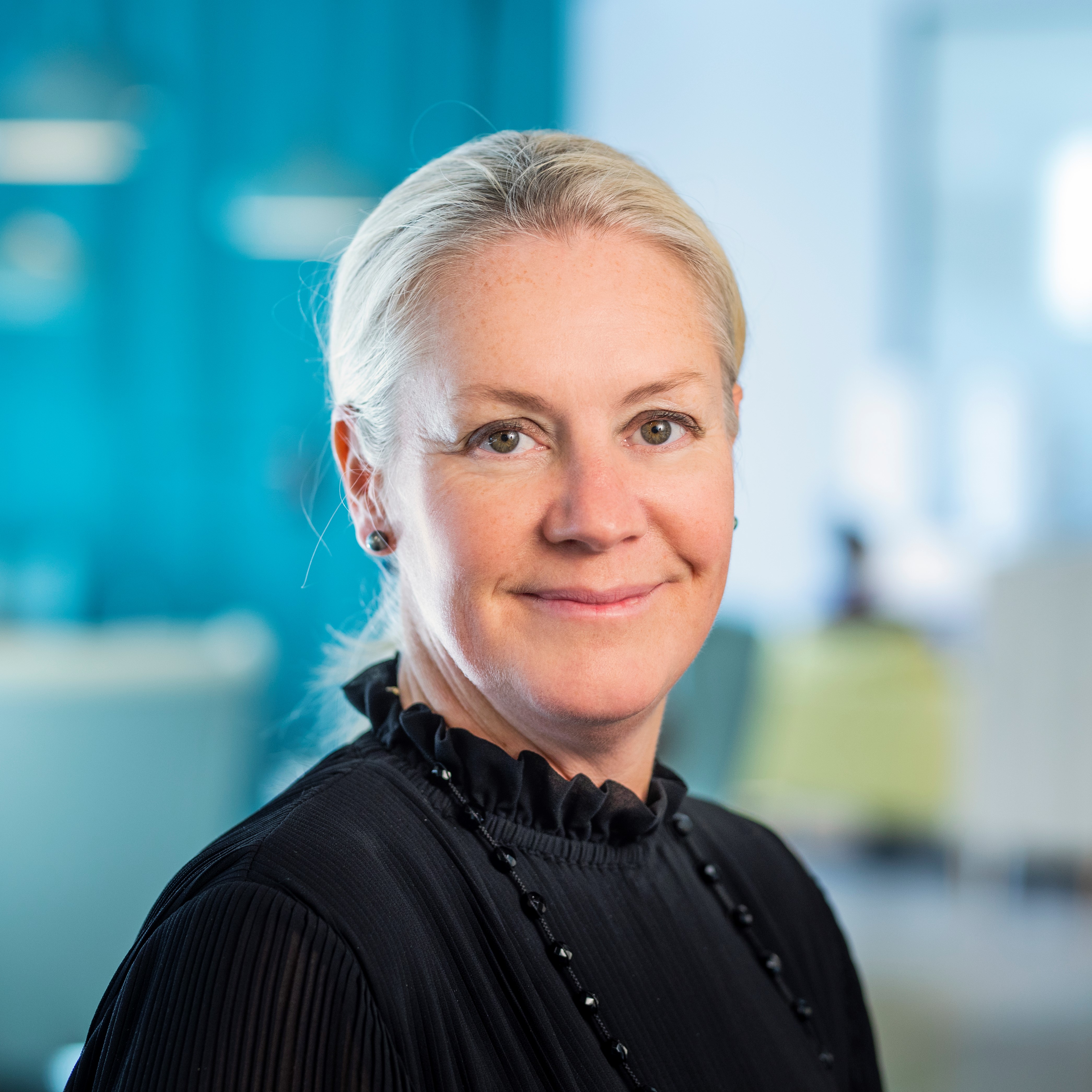
Pia Heidenmark Cook
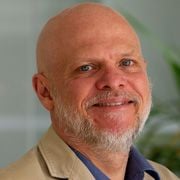
Sergio Avelleda
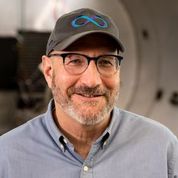
Jay Walder
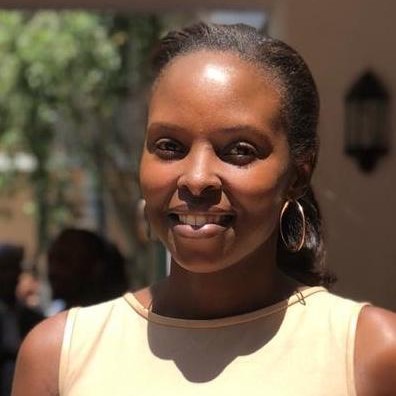
Claire Birungi
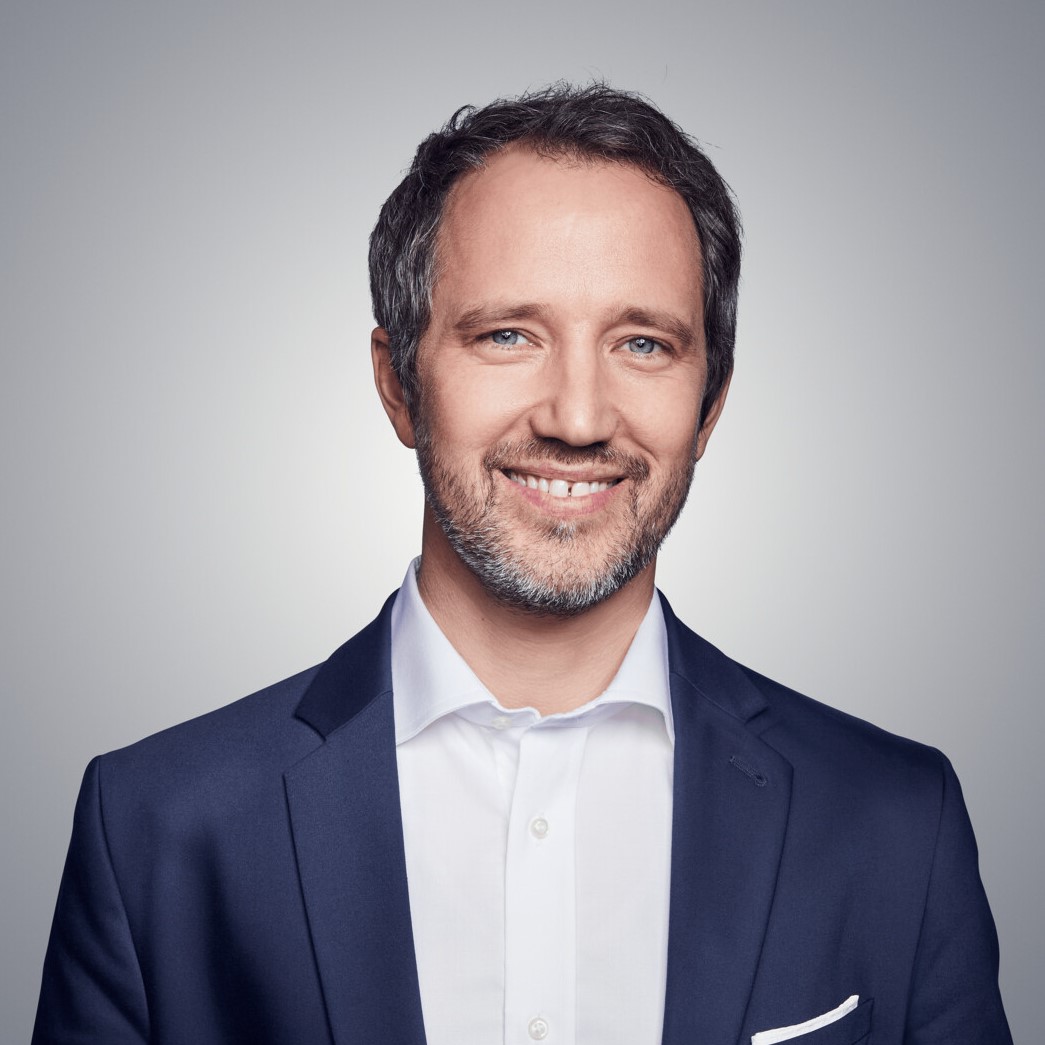
Florian Reuter
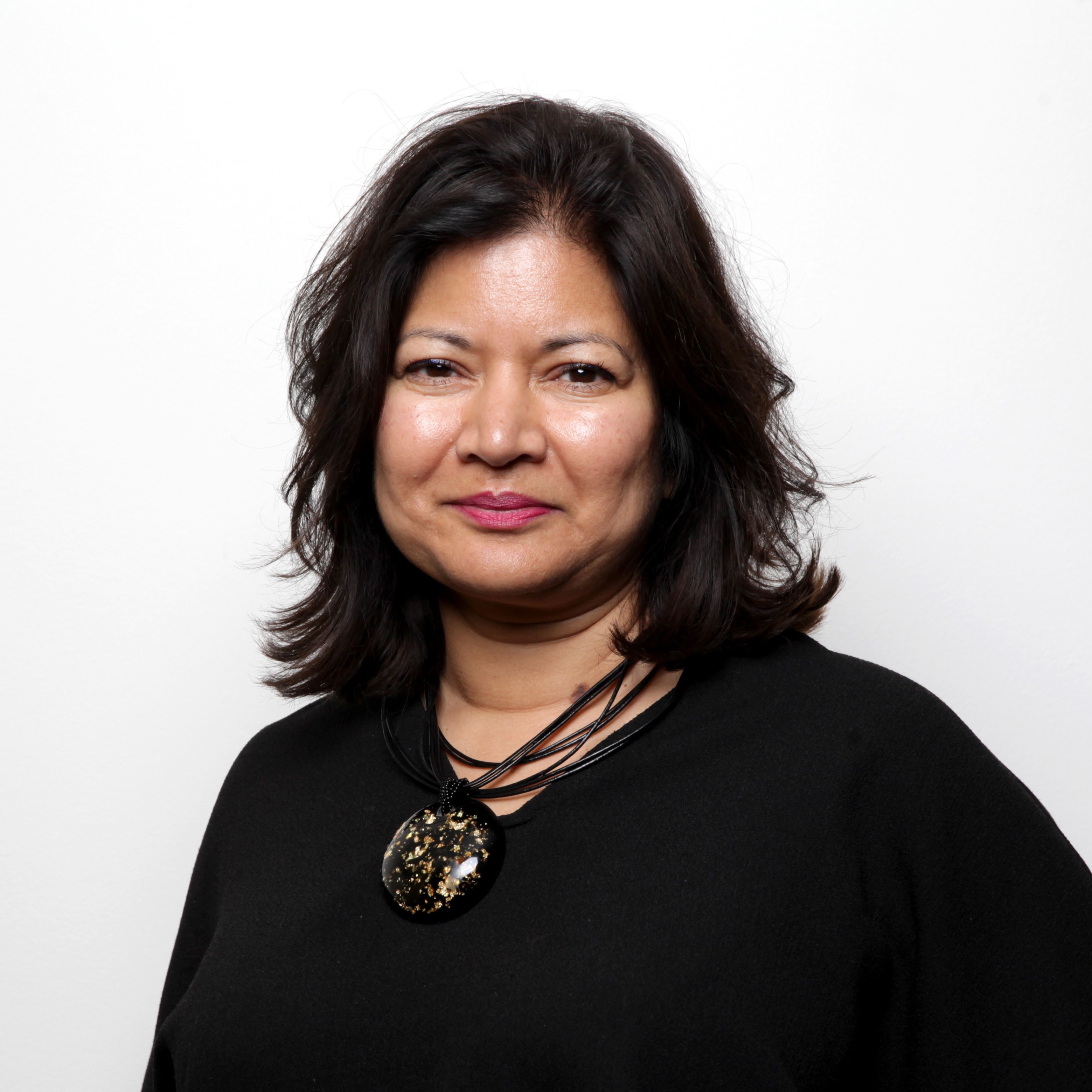

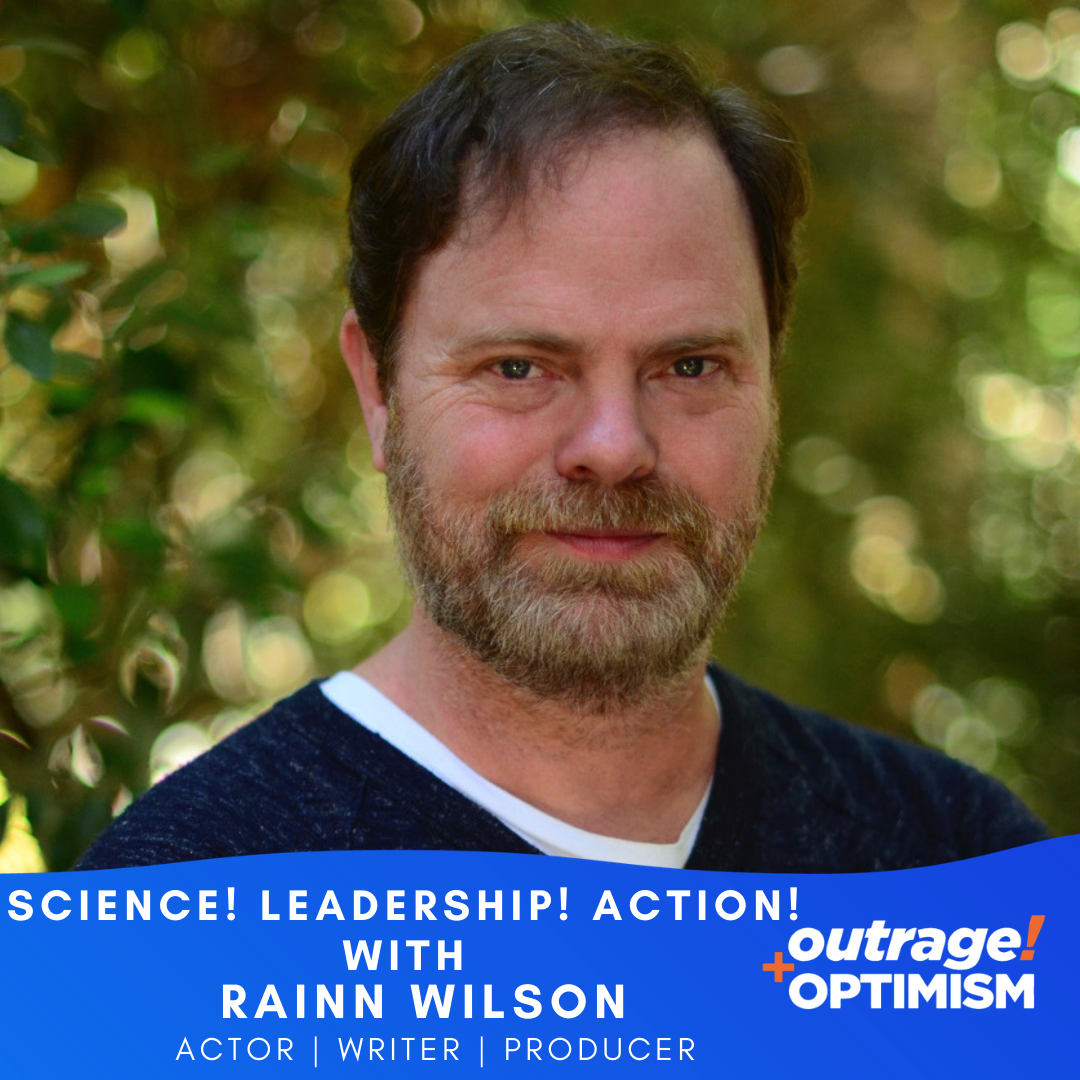
.png)
